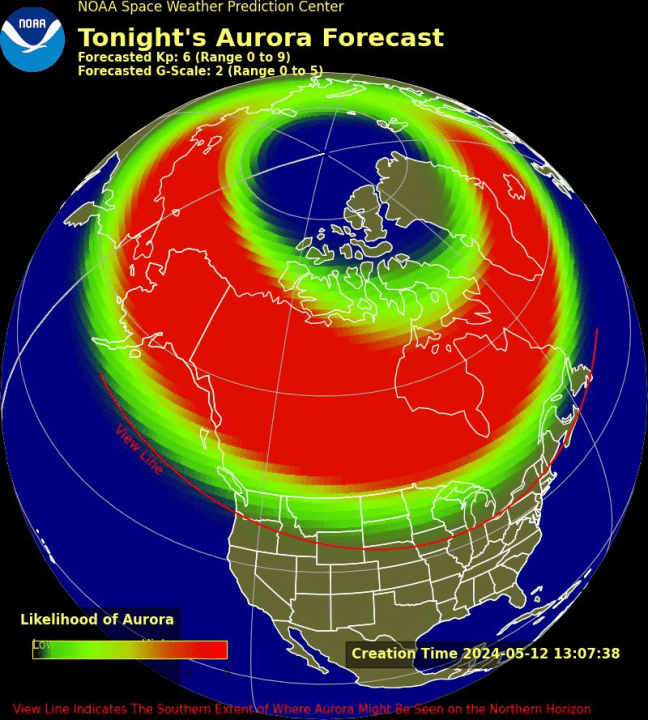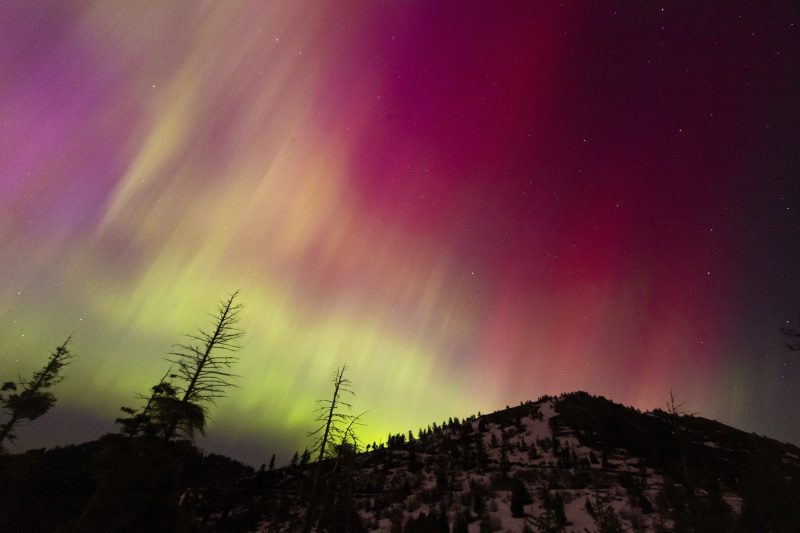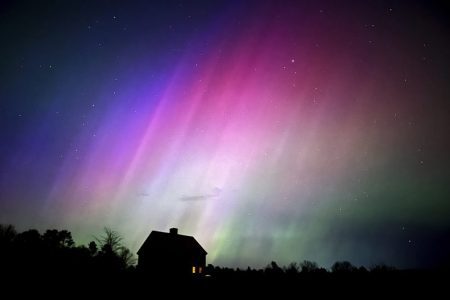(NEXSTAR) — It's been an eventful weekend for people who enjoy observing the sky as uncommon, powerful geomagnetic storms have affected Earth, creating impressive northern lights – and it's not finished yet.
NOAA’s Space Weather Prediction Center (SWPC) says forecasts that more “very fast moving coronal mass ejections will hit Earth’s magnetic field” until Sunday night, giving Americans a third consecutive night to possibly see the northern lights.
On Saturday, the aurora was intense enough to reach Florida, according to Nexstar’s WFLA. This only happens when geomagnetic storms reach G5 strength, the SWPC explains (here’s how geomagnetic storms are categorized).
G5 level storms were also seen Friday night until Saturday. We haven’t experienced G5 level storms since 2005, when a sequence of coronal mass ejections brought stunning northern lights displays as far south as California, Texas, and Florida — states that rarely ever witness them — and created other (less impressive) technical issues.
As for Sunday, the SWPC is cautioning that we may encounter storms of G4 or higher strength. Below is SWPC’s aurora forecast for Sunday — areas in red have the best chance of seeing the northern lights, while those in green and near and above the red line have a lower chance.

If you can't see the northern lights on Sunday night, you might want to try using your phone. Point your camera towards the night sky and take a picture — you may be surprised to see the aurora.
You may have the opportunity to see the northern lights again this week, as the SWPC states that the aurora activity could continue due to the particularly high solar activity. This also means potential impacts to, though our power grid and other infrastructure many are ready for events like this
All of this solar activity is thanks to Solar Cycle 25, which was predicted to peak this year. During the 11-year period of a solar cycle, the sun will reverse its poles, resulting in solar activity that causes geomagnetic storms on Earth.









